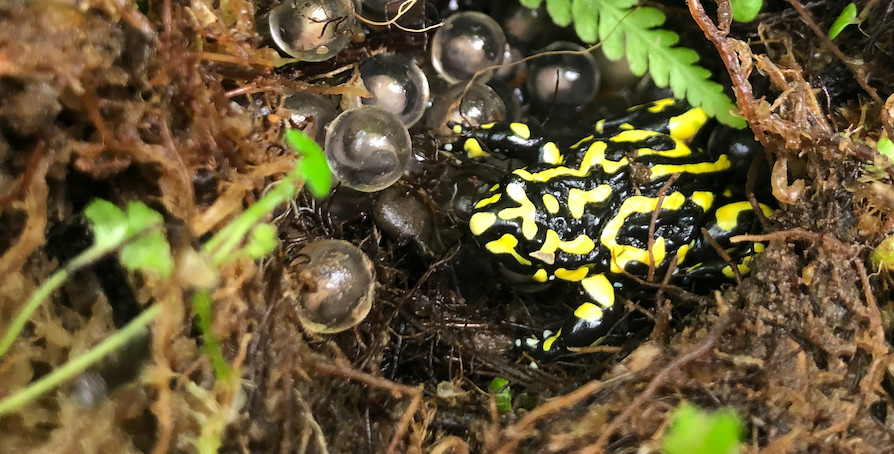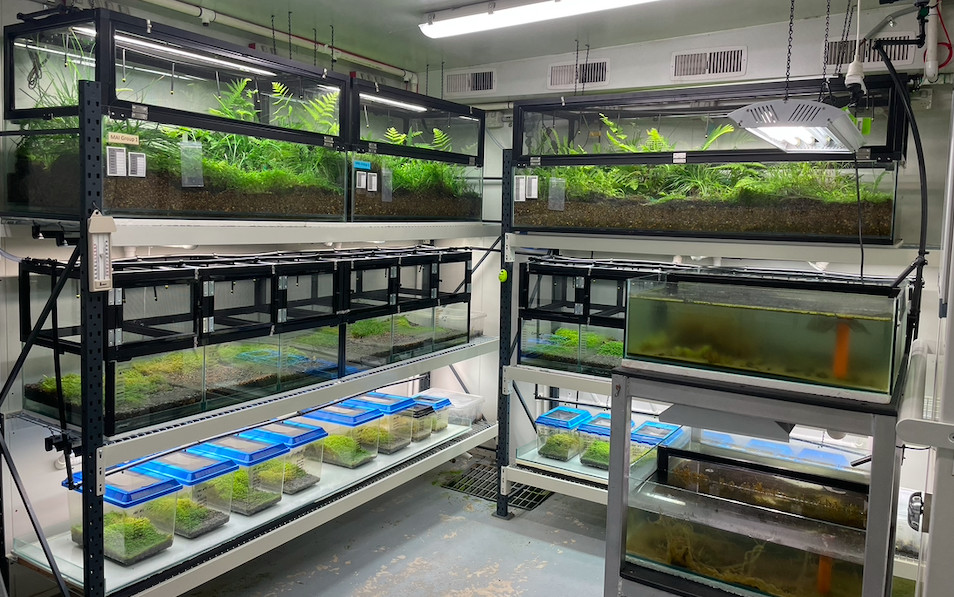
Sciences & Technology
Using genetics to conserve wildlife

New research into the embryo health of captive bred Southern Corroboree frogs may help their survival and guide conservation efforts
Published 7 December 2022
It is estimated that one million animal and plant species are threatened with extinction as a result of human activity.
For species not critically threatened, the preferred management action is to restore and protect their native habitat, by preventing the introduction or spread of disease, illegal (or legal) harvesting and removing pests or introduced predators.

But for species on the brink of extinction, unable to survive in the wild anymore because of disease, poaching, habitat loss or predators, captive management is often their only hope for continued survival.

Sciences & Technology
Using genetics to conserve wildlife
Despite being a last resort, captive breeding colonies have become a vital management tool for the conservation of many highly threatened species including the Eastern Barred Bandicoot, Helmeted Honeyeater the Lord Howe Island Stick Insect and internationally the Californian Condor and Arabian Oryx.
But mimicking what happens in nature is clearly a challenging process and successful breeding programs are not straightforward.
Our new research has identified some of the factors limiting embryo survival in captively bred Corroboree frogs, with the aim of reducing these to enhance reintroduction into the wild.
Although the goals of conservation breeding programs may vary, they typically fall under three categories:
1) establishing a captive insurance population 2) supplementing an existing population (either wild or captive) 3) re-establishing a population that is extinct in the wild.

These programs work by providing a safe, controlled environment to produce offspring, which are then given a head start in life by protecting them from predators, adverse weather conditions and providing nutrition.

Environment
Hope for endangered frogs
However, bringing wild animals into captivity is complex, and trying to get them to breed is even more so because their environmental, nutritional, behavioural and developmental needs must be met to ensure success.
This is typically done by studying the species in the wild to understand the conditions they require to be happy and healthy, and then replicating these in captivity as best as possible.
For conservation breeding programs, reproductive output – the production of a successful breeding event – is a key measurement of success, but if an animal’s needs are not being met it is unlikely they will breed.
Importantly, reproductive success doesn’t stop when live young are produced, so another way we can measure success is with offspring survival.
While this is easier to gauge, it’s typically much harder to fix and to reduce offspring mortality we first need to understand what the cause of mortality is.
For species, that produce a large number of offspring, high mortality is natural, only a few will ever survive to carry on the species. This is common in amphibians, fish and insects.

However, when dealing with a threatened species, in a controlled environment, it’s important to investigate any causes of offspring mortality to rule out any captivity-related issues like disease, malnutrition or inadequate housing.

Environment
The threatened species in our urban jungle
We recently partnered with Melbourne Zoo’s amphibian recovery team, to investigate causes of mortality in captive-bred Southern Corroboree frog embryos.
With its yellow and black stripes, this striking native frog has been driven to near extinction by the deadly amphibian chytrid fungus.
There are now no self-sustaining populations of Corroboree frogs in the wild, but thanks to conservation action taken by Zoos Victoria and the Taronga Conservation Society, captive insurance populations and breeding colonies established in the early 2000s have saved the Southern Corroboree frog from going extinct.
If we measure captive breeding success with reproduction rates, then captive breeding in this species has been very successful, producing thousands of embryos each year, however, embryo mortality has been continuously high, resulting in a 10 to 60 per cent offspring survival rate each year.
In our recently published article, we investigated the cause of mortality in these captive-bred embryos and discovered a high rate of fungal infections, as well as a range of anatomical deformities, with affected embryos experiencing 89.8 per cent mortality

Our study identified two species of fungi that have never been found in amphibian embryos before, but the cause of disease is likely to be multi-faceted.

Sciences & Technology
Variety is the spice of life... and key to saving wildlife
In diseased embryos, fungal infections are often considered secondary invasions, rather than the primary cause of mortality.
It’s possible that developmental errors may weaken the defence system of an embryo and allow fungi to invade the embryo, causing the infections we found.
Alternatively, fungal colonisation may result in developmental errors by disrupting embryonic development. We saw a range of anatomical deformities in these embryos, however, due to high rates of fungal infections we were unable to identify the cause of infections and deformities from one another.
To try and determine the primary cause of mortality in these embryos we are continuing to work alongside the captive breeding program to understand what underlying stressors could be weakening the embryo’s defence system – making them more susceptible to infections.
These underlying stressors could be infertility, inadequate husbandry conditions (including temperature, humidity or UV), parental care, or a combination of all, or none of these.

We hope that through this work the Corroboree Frog’s reproductive needs can be better understood because for a species dependent on captive breeding, determining the factors that influence embryo health and survival is critical to optimising their conservation efforts.

Of course, although captive breeding for conservation is vital in highly threatened species, it does not address the underlying threats.
It’s imperative that captive breeding is used in conjunction with other conservation methods like habitat protection, to successfully protect and restore these species in the wild.
The research team includes Mikaeylah Davidson, Rhys Bushell, Dr Marc Marenda, Dr Richard Ploeg, Dr Tiffany Kosch, Dr Lee Skerratt and Dr Lee Berger from the University of Melbourne. As well as our partners Damian Goodall and Deon Gilbert from Zoos Victoria, and Dr Catriona Halliday from NSW Health.
Banner: Adult male Southern Corroboree frog on a nest of captive-bred embryos at Melbourne Zoo/Damian Goodall